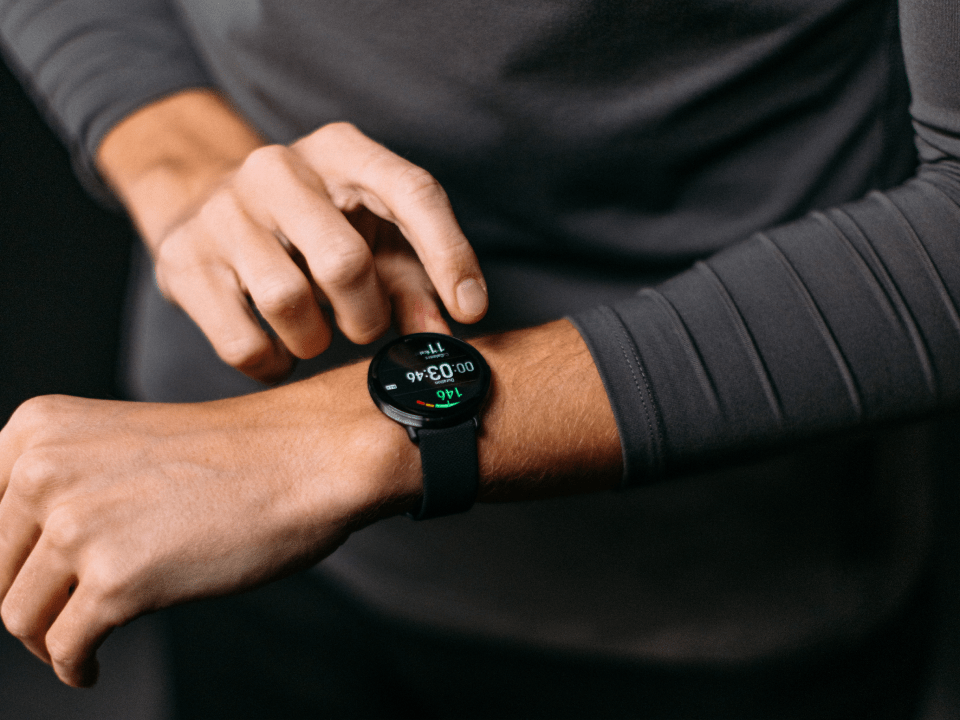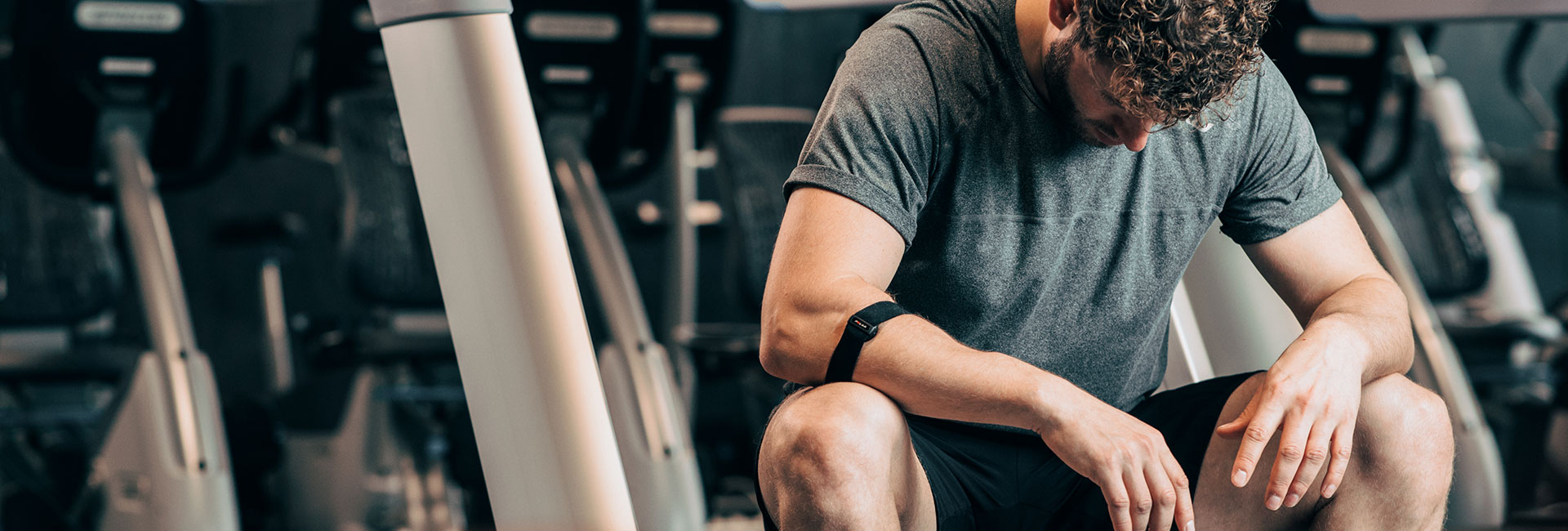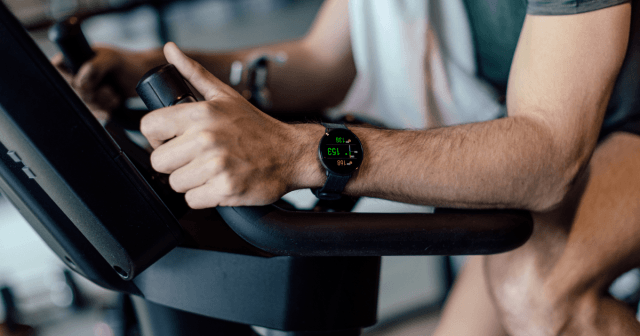Getting fit. Building muscle. Conditioning your body. Getting in shape. No matter how you phrase it, working out with a goal in mind probably takes a little longer to achieve than you think. How long, you may ask. If you want to see results from working out, remember: it won’t happen overnight, but it will happen.
That’s right. You’ll need patience and persistence to get fit. Weeks of working out without seeing any changes. Showing up, putting in the effort, investing in yourself for tomorrow rather than today. But one thing that might surprise you is how much better you’ll feel long before you notice any improvements.
Seeing results from your workouts can be really rewarding, so whatever journey you just started (or are about to start), keep going. If you’re looking for a timeline on the progress you may see, here are some key ways that people work out – strength training, running, and cardio – to give you an idea of why you need to keep going.
How long does it take to get fit?

Firstly, if you’re wondering, ‘How long till I see results from working out?’ you need to identify what results you hope to see. Are you hoping to feel stronger or more energetic? Seeing your muscles when you flex or stretch a little further than before? You must work out in a way that will help you obtain these goals. After all, there’s no use only running when you want an eye-catching amount of upper body strength.
No matter your goals for getting fit, it’s important to remember that everyone’s journey to fitness is unique. Someone else may progress faster than you due to factors like genetics and prior fitness levels. Comparison won’t always be your friend here. Better to focus on your progress than trying to match someone else’s.
You’ll probably notice some initial changes in the first four to six weeks, but longer-term changes (what you’re working toward) will often take around eight to 12 weeks.

As a rough guide, you’ll probably notice some initial changes in the first four to six weeks, but longer-term changes (what you’re working toward) will often take around eight to 12 weeks. The good news is that you’re likely to start feeling better quickly. More energy and generally feeling in a better mood are typical among people who have just begun training. Improved sleep is also expected, which is excellent as you’ll need it to help with muscle growth.
It’s the outward changes that take their time. A study from the University of Wisconsin, USA, found in 2004 that even after six weeks of training, a group of 25 men found little difference in their physical appearance. These results were matched by a panel that rated the men on the same criteria before and after these weeks of training. This tells you that there isn’t a miracle workout that will bring you to the peak of fitness in such a short period.
So, exactly how long will it take? Look at the timelines below to understand how to track your progress and manage your expectations.
HOW LONG DOES IT TAKE TO BUILD MUSCLE?
If you want to build muscle fast, the reality is you won’t have anything noticeably worth flexing for a few months. But with consistency, progressive overload (increasing the weight or resistance over time), and patience teamed with quality sleep and proper nutrition, you’ll be rewarded with serious tone and strength.
Here’s a general overview of what you can expect when it comes to building muscle:
- Initial Gains (Weeks 1-4): In the initial weeks of a well-structured training program, it’s common to experience some immediate gains in muscle strength and endurance. These are often due to neural adaptations, as your body becomes more efficient at recruiting muscle fibers. You may notice improved muscle definition, especially if you’re new to resistance training.
- Noticeable Changes (Months 2-3): After two to three months of consistent training, you’ll likely start seeing more significant muscle size and strength changes. At this time, many people notice that their muscles appear fuller and more defined. It’s essential during this phase to progressively increase the resistance or weight you’re lifting to stimulate further muscle growth.
- Building Solid Foundation (Months 4-6): Around the four to six-month mark, you’ll be building a solid foundation of muscle. Your strength and endurance will have increased noticeably, and your physique will continue to develop. Building muscle is an ongoing process; consistency is crucial during this phase.
- Long-Term Progress (6+ Months): To achieve significant muscle growth and attain a well-developed physique, you’ll need to commit to training for an extended period, often beyond six months. It’s especially true for individuals with specific bodybuilding goals. Over time, your muscles will continue to adapt and grow, but progress may slow down compared to the initial months.
- Maintenance and Refinement: Once you’ve achieved your desired level of muscle development, maintaining and refining your physique becomes the focus. This stage involves consistency with your workout routine, adjusting your training program to avoid plateaus, and fine-tuning your diet and nutrition to support muscle growth and recovery.

How long does it take to get fit running?
Running is an excellent way to improve cardiovascular fitness, build endurance, and burn calories. Plus, it’s a great way to escape from your computer and let your exercise take you into nature (maybe accompanied by an energizing playlist). As with any workout, the time it takes to get fit through running varies depending on your fitness level when you start, your goals, and your commitment to training.
Here’s a general timeline of what you can expect when it comes to getting fit through running:
- Weeks 1-2: In the first couple of weeks of running, you’ll likely experience some immediate benefits. You might notice increased energy levels, improved mood, and better sleep. Your cardiovascular system will begin to adapt to the increased demands, and you’ll find that your stamina improves slightly.
- Weeks 3-6: During this period, your body will start to adapt to the regular running routine. You may notice that your endurance gradually increases, allowing you to run longer distances or maintain a faster pace. It’s a crucial phase for building a solid foundation for your running fitness.
- Months 2-3: By the end of the second month, you should see more substantial improvements. Your cardiovascular fitness will have increased significantly, and you’ll likely notice changes in your body composition, including potential weight loss and improved muscle tone. Consistency is critical during this phase to continue building endurance and strength.
- Months 3-6: Around the three to six-month mark, you’ll experience a noticeable boost in your running fitness. You may be able to easily run longer distances, maintain a faster pace, and recover more quickly after runs. Many runners find this stage highly motivating as they see their hard work paying off.
- Long-Term Progress (6+ Months): To achieve a high level of running fitness, especially if your goal is to run long distances or participate in races, you’ll need to commit to consistent training for six months or more. Dedication and a structured training plan can significantly improve endurance, speed, and overall fitness over the long term.
HOW LONG DOES IT TAKE TO GET IN CARDIO SHAPE?
Like running, cardio workouts have various health benefits, such as improving stamina and burning calories. You’ll also boost your heart health by decreasing high blood pressure, cardiovascular disease, and stroke risk. If you want to improve your aerobic fitness, you’ll need to keep up your training for at least six weeks before seeing noticeable changes.
Here’s a general timeline of what you can expect when working to get fit with cardio workouts:
- Immediate Benefits (Weeks 1-2): When you begin incorporating cardio exercises into your routine, you may notice some immediate benefits. These can include increased energy levels, improved mood, and better sleep. Your cardiovascular system starts to adapt to the increased demands, leading to improved circulation and lung capacity.
- Endurance and Stamina (Weeks 3-6): After a few weeks of consistent cardio training, you’ll likely experience enhanced endurance and stamina. You may find it easier to sustain longer workouts and notice that you can perform cardio exercises at higher intensity levels without becoming as tired.
- Weight Loss (Months 2-3): If your goal is to lose weight, you can expect noticeable results after a couple of months of regular cardio workouts, especially when combined with a balanced diet. Sustainable weight loss typically occurs at a rate of one or two pounds per week, so you’ll notice gradual changes in your body composition.
- Cardiovascular Fitness (Months 2-3): Your cardiovascular fitness continues to improve as you progress. After a couple of months, you’ll experience more efficient oxygen utilization, a lower resting heart rate, and better recovery times after intense cardio sessions.
- Long-Term Progress (6+ Months): To achieve and maintain a high level of cardiovascular fitness, you should commit to regular cardio workouts for six months or longer. Over time, your heart and lungs adapt to the increased workload, and you’ll see significant improvements in overall fitness.
How long does it take to get your fitness back?
You’ve been there, done the work, seen the results, and now you want it back. Maybe you had an injury or an illness that meant you had to give up on maintaining your fitness for a while. Or perhaps life got a bit busy, and your priorities had to change for a time.
Remember: you won’t be able to jump straight back in at the level you were at when you stopped.
Whatever the reason, it’s never too late to start working out again. Remember: you won’t be able to jump straight back in at the level you were at when you stopped. You’ve detrained, and that’s ok, but it does mean you will have to do more training to regain your fitness level.
But exactly how much training will it take? How long until you see results from working out again? As always, that depends on many factors, such as what type of workouts you did before and how sedentary you have been during your detraining. Think of it as the above timelines in reverse: if it’s been a couple of weeks, you’ll probably only have detrained a little, but if it’s been 6+ months, then you’re probably back to base level again.
Most people will need to build back slowly over the course of a few weeks. For example, if you want to jump into doing strength training again, start with weights that are half what you were lifting previously. After a few sessions (as long as you’re doing about two a week), you can then increase it to three-quarters of the weight for the subsequent few sessions and see how you feel from there.
It’s essential to pay attention to how the workout feels rather than keeping to a schedule for training again. So, don’t rush it. Your fitness will return and in time you’ll see results from working out.

If you liked this post, don’t forget to share so that others can find it, too.
Or give it a thumbs up!
I like this article
Please note that the information provided in the Polar Blog articles cannot replace individual advice from health professionals. Please consult your physician before starting a new fitness program.





